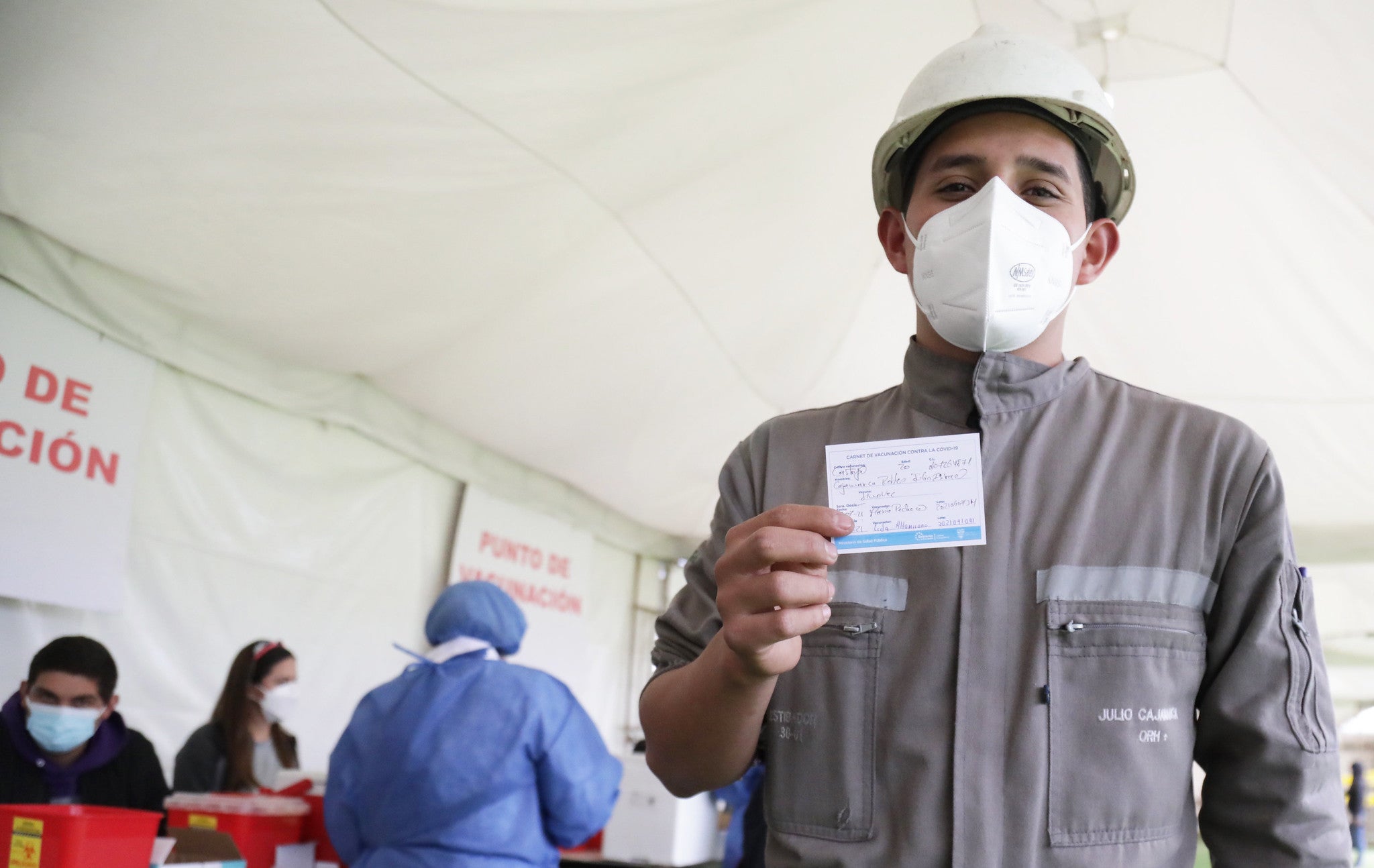 Worker in Cuenca, Ecuador
Worker in Cuenca, Ecuador
Just take a quick look at your phone and you will agree that good news is hard to come by in the context of the current health crisis in Latin America and the Caribbean.
That’s why we are particularly excited to see some encouraging developments -in this case coming from Ecuador.
Only a year ago the collapse of the country’s healthcare system was making headlines around the world. Today, with its successful vaccination campaign, it is setting an example for countries in the region and globally.
Ecuador currently administers the highest daily number of doses per 100 people in the world. To put it simply: in the time it has taken you to read this far, hundreds of people in Ecuador will have been be vaccinated against COVID-19.
With this surge in vaccinations, the government expects to inoculate 9 million people - half the country's population – in a mere 100 days by early September. So far everything suggests that the campaign is on course to achieve this goal comfortably: at the time of writing this blog, the vaccination rate is 200,000 people a day.
It is clear that the improved availability of vaccines -thanks to successful government attempts to procure them- and their efficient distribution are mainly responsible for this favorable scenario. But there are also less visible, although equally important, reasons why the campaign can be considered to be a Latin American success story despite the adverse regional context.
Let’s highlight two of those reasons.
First, there is the immense effort put into planning and logistics, including meticulous coordination between the central and regional governments, the private sector, universities and international organizations. It’s worth highlighting the key role played by private companies, which provided valuable logistical support and resources.
These efforts resulted in a well-structured campaign with segmented "vaccination days" for state and private sector workers, students, and the general public. Special days were also set aside for vaccinating harder to reach groups, such as the indigenous, the rural and the migrant populations. Innovation also played an important role: the Electoral Register - recently updated for the general elections – was leveraged to identify and contact people eligible for vaccination, while polling stations were used as vaccination centers
Second, there is the exceptional teamwork forged between Ecuador’s government (which showed firm leadership throughout the campaign) and the development organizations, resulting in unprecedentedly close collaboration between the World Bank, IDB, CAF, PAHO, WHO, UNICEF and other UN agencies, which enabled them to share their vast joint vaccination expertise with Ecuadorian officials.
It’s worth noting that the efficiency and speed of the vaccination campaign has given Ecuadorians renewed confidence, which in turn is playing an important role in the country’s economic recovery.
Also noteworthy is the fact that that none of the above would have happened so smoothly without the seamless transition between the incoming and outgoing governments, in the middle of the pandemic in May 2021, which reduced the uncertainty and delays that often arise from political changeovers.
Finally, we would not have such a good response from the population had there not been a strong focus on public communications, which is part of the solution in any crisis of this type and magnitude.
Todos somos parte del #PlanVacunación9100, acude a recibir tus dos dosis.
— Ministerio de Salud Pública (@Salud_Ec) August 8, 2021
Ingresa a https://t.co/GJYVu1JYQD y consulta tu lugar y fecha de vacunación.
¡#DileSíALaVacuna, porque #JuntosLoLogramos! pic.twitter.com/ZlZkOj2FMB
We still have a difficult road ahead: in light of the new COVID-19 variants, Ecuador still has to urgently vaccinate several million more people.
However, we can say with certainty that with these first firm steps the country is beginning to turn the page on the pandemic, in an effort that deserves to be replicated in other parts of the region.
The World Bank Group is working very closely with the region in its response to the COVID-19 crisis - one of the most severe in the region’s history. In fiscal year 2021, that commitment translated into a record figure of US$ 29 billion, aimed at containing the social, economic and health fallout from the pandemic, as well as helping to respond to challenges such as hurricanes and migratory flows.



Join the Conversation